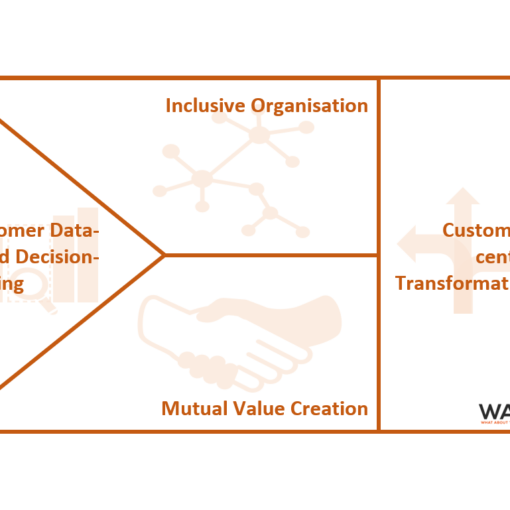Building a truly customer-centric culture is one of the most critical yet challenging transformations a company can undertake. It requires more than policies or initiatives – it demands a deep-rooted shift in mindset and behavior that permeates every level of the organization. At WATC Consulting AG, we emphasize that this cultural change begins with strong leadership, a clear and authentic vision, and a well-defined plan that aligns all employees around the shared goal of prioritizing the customer in every decision and action.
THE IMPORTANCE OF A CUSTOMER-CENTRIC CULTURE
A customer-centric culture reshapes how an organization operates by making customer needs the central focus of strategy, processes, and innovation. Without embedding this culture, customer experience efforts risk being fragmented and unsustainable. True transformation happens when customer centricity becomes a natural part of the company’s DNA.
FUNDAMENTAL ELEMENTS TO FOSTER A CUSTOMER-CENTRIC CULTURE
- Visionary Leadership and a Compelling Change Narrative
Cultural change starts with leaders who clearly articulate why customer centricity matters, what success looks like, and how the organization will achieve it. This narrative must be credible and consistently demonstrated through leadership actions to inspire trust and commitment. - Aligning Vision, Mission, and Core Values with Customer Focus
Embedding customer-centric principles into the company’s foundational statements ensures that everyone understands the importance of creating value for customers. These principles should guide everyday decisions and be reflected in performance evaluations. - Empowering and Equipping Employees
To deliver exceptional customer experiences, employees need both the skills and the authority to act. Training programs should emphasize customer understanding, effective communication, and problem-solving capabilities. Empowered employees are motivated to take ownership of customer outcomes. - Encouraging Collaboration Across Departments
Eliminating silos between sales, marketing, product, and service teams is essential. When departments work together seamlessly, the organization can deliver consistent, high-quality experiences that meet or exceed customer expectations. - Listening to Customers and Taking Action
Regularly collecting customer feedback and using it to drive improvements shows a genuine commitment to customer needs. Closing the feedback loop helps the organization stay responsive and relevant. - Rewarding Customer-Centric Behaviors
Recognizing and celebrating employees who demonstrate customer-first attitudes reinforces the cultural shift. Whether through formal awards or informal praise, visible recognition motivates others to follow suit.
MAINTAINING MOMENTUM: A CONTINUOUS JOURNEY
Building a customer-centric culture is an ongoing process, not a one-off project. Organizations must continuously evaluate their cultural health, measure progress, and adapt to changing customer expectations. Frameworks like the WATC’s Customer Centricity Canvas provide valuable tools to monitor and guide this evolution.




